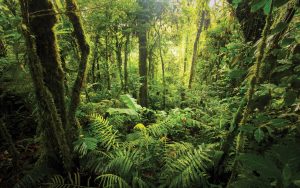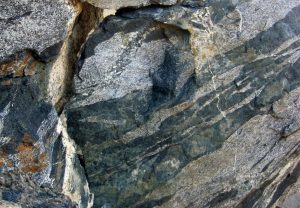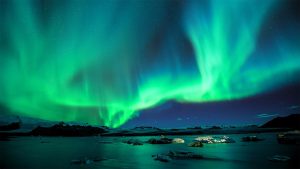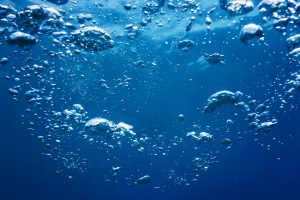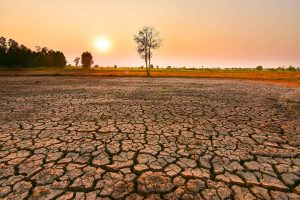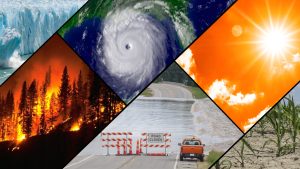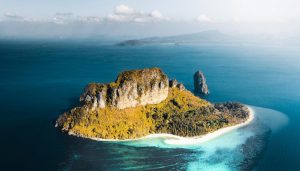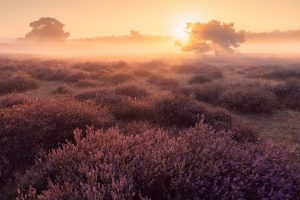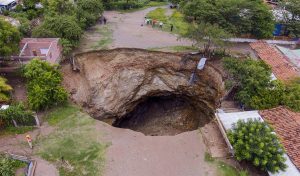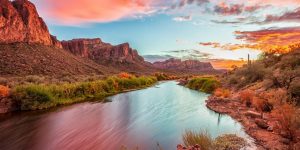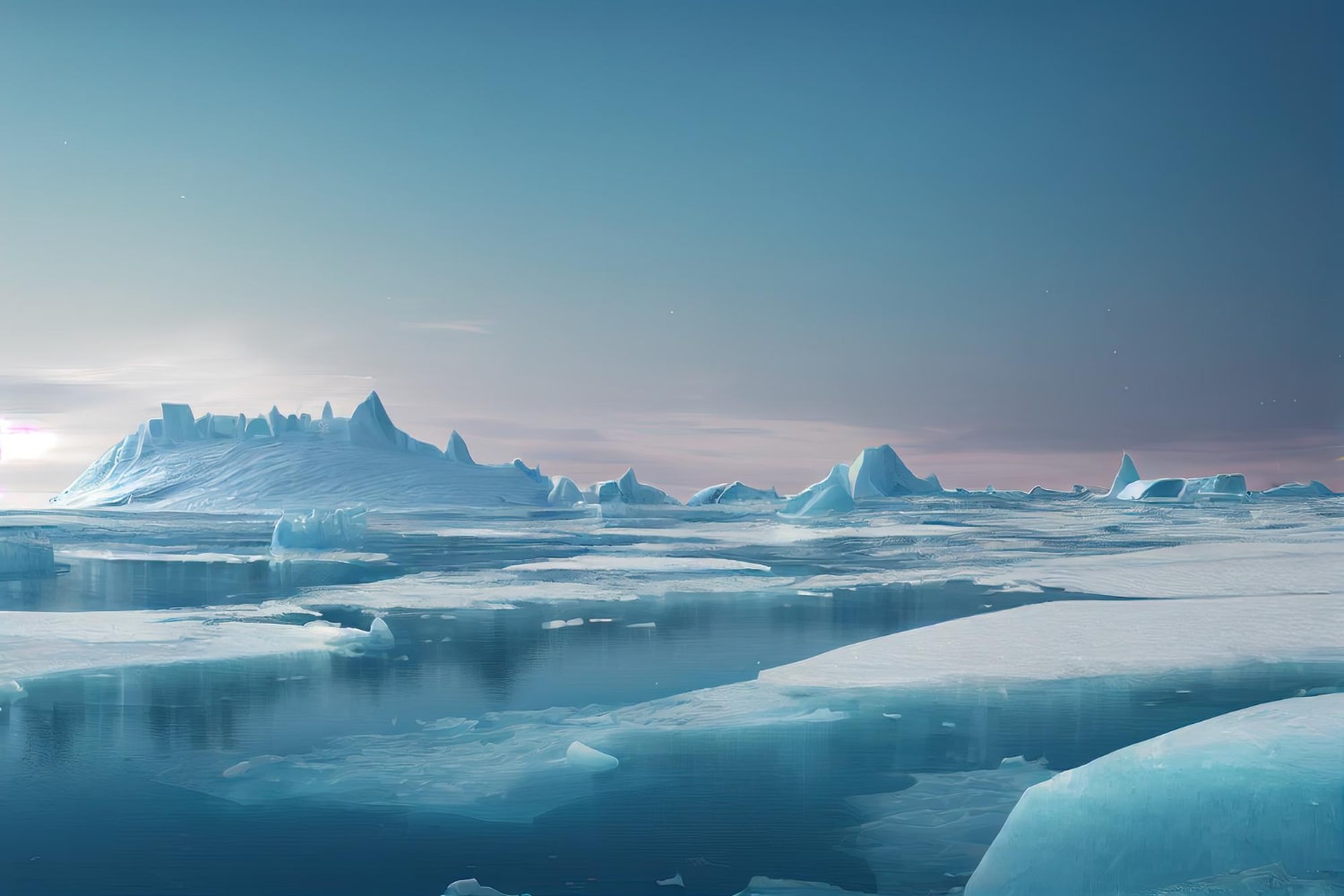
35 interesting facts about Arctic
- 👁️ 1115
The Arctic is a vast and enigmatic region located at the northernmost part of our planet. It encompasses the Arctic Ocean, parts of Canada, Greenland, Russia, the United States (Alaska), Iceland, Norway, Sweden, and Finland. Characterised by extreme conditions, including freezing temperatures, long periods of darkness in winter, and continuous daylight in summer, the Arctic is home to a unique array of flora and fauna. The region plays a crucial role in the global climate system and has been a focal point of scientific research, particularly concerning climate change. Rich in natural resources and cultural heritage, the Arctic is a fascinating area that continues to intrigue and challenge our understanding.
Fascinating facts about the Arctic:
- The Arctic Circle is defined by the latitude 66°33′46.9″ N, marking the southern extremity of the polar day and night.
- Despite its icy reputation, the Arctic consists mainly of ocean, some of which remains covered by sea ice throughout the year.
- The North Pole, situated in the middle of the Arctic Ocean, is not on land but in waters almost 4,000 metres deep.
- The Arctic region is home to around four million people, including indigenous communities such as the Inuit and the Sami.
- The Arctic’s ice plays a vital role in cooling the planet by reflecting sunlight back into space.
- Polar bears, one of the most iconic species of the region, rely on sea ice to hunt seals.
- The Arctic has approximately 400 species of fish, supporting birds, mammals, and human communities.
- The Aurora Borealis, or Northern Lights, is a natural light display frequently visible in Arctic regions.
- The Arctic’s permafrost contains large amounts of trapped carbon, which could be released as it melts.
- The Arctic Ocean is the smallest and shallowest of the world’s five major oceans.
- There are no penguins in the Arctic; they are native to the Southern Hemisphere, primarily Antarctica.
- The Greenland Ice Sheet is the largest body of ice in the Arctic, and its melting significantly contributes to global sea-level rise.
- The Arctic experiences a phenomenon called the Midnight Sun, where the sun stays visible for 24 hours during the summer months.
- Conversely, the Polar Night occurs during winter when the sun does not rise above the horizon for weeks or months.
- The Arctic Tern, a migratory bird, travels around 70,000 kilometres from the Arctic to Antarctica and back every year.
- The Arctic region is rich in minerals and resources such as oil and gas.
- Many Arctic glaciers and icebergs produce a fizzing sound called “Bergy Seltzer,” due to trapped air bubbles.
- The Arctic holds about 1,700 species of vascular plants.
- The word ‘Arctic’ comes from the Greek word ‘Arktikos,’ meaning ‘near the bear,’ referring to the constellation Ursa Major.
- Climate change is affecting the Arctic at a rate almost twice as fast as the rest of the planet.
- Walruses, seals, whales, and narwhals are common marine mammals found in the Arctic.
- The region is home to unique phenomena such as ice circles and frost flowers.
- The Arctic has numerous volcanoes, including some that are still active.
- Mosquitoes can be surprisingly abundant in the Arctic summer, breeding in temporary ponds.
- There are more than 50 different indigenous languages spoken in the Arctic region.
- The Northwest Passage is a sea route connecting the Atlantic and Pacific Oceans through the Arctic Ocean.
- The Arctic hosts a wide variety of research stations for studying everything from climate change to human physiology.
- The Arctic Ocean has a significant impact on the world’s weather patterns, influencing the jet stream.
- The Arctic fox is the only land mammal native to Iceland.
- Caribou, also known as reindeer in Europe, are essential to the livelihood of many indigenous people in the Arctic.
- Some species of diatoms, a type of microscopic algae, can live within the ice in the Arctic.
- The first confirmed sighting of the North Pole was on April 6, 1909, by Robert Peary and Matthew Henson.
- Trees grow in parts of the Arctic, mainly in the form of dwarf shrubs, due to the harsh conditions.
- The Arctic is home to the Svalbard Global Seed Vault, preserving a wide variety of plant seeds.
- Shipping through the Arctic is increasing due to melting ice, raising concerns about environmental impact.
The Arctic’s profound beauty, ecological significance, and cultural richness are matched only by its fragility and vulnerability, especially in the face of climate change. Understanding the Arctic is crucial not just for the region itself, but for the entire world, as changes there have far-reaching impacts. The melting ice, shifting ecosystems, and potential for increased human activity present both challenges and opportunities. The Arctic stands as a testament to the intricacies of our planet, where life adapts and thrives in the harshest conditions, and where nature’s grandeur is both awe-inspiring and a poignant reminder of our responsibilities as stewards of the Earth.
